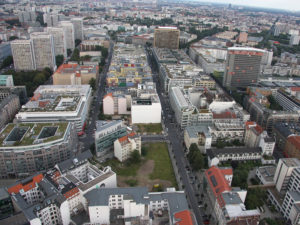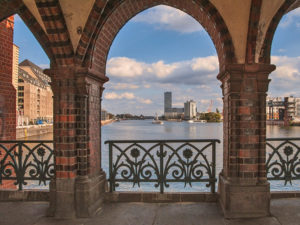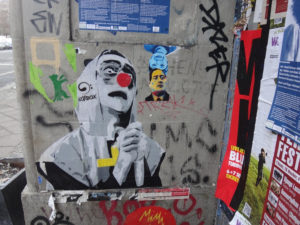Ever since moving to the city I have heard so much about the wonders of Kreuzberg from both friends in Berlin and clients at Black Label alike. In recent years, properties that we’ve had for sale in the district, which is part of the combined Friedrichshain-Kreuzberg borough to the south of Mitte, have always received large numbers of enquiries. One could argue it’s become, in the Berlin property market at least, the most sought-after neighbourhood in the city.
I barely had any prior knowledge of Berlin and the different areas before I moved here. Mitte was all I knew and so the more I heard about this highly talked-about place called ‘Kreuzberg’, the more intrigued I became. Who’s living there? Why’s it such an attractive area to so many buyers? Barely anyone had mentioned ‘Wedding’ or ‘Spandau’, but for some reason Kreuzberg was the place ‘to be’. A few months on and while I certainly don’t have a whole wealth of knowledge about Kreuzberg, I definitely know more now than I did previously.
Starting with who is living there. There are so many different groups and types of people who have made Kreuzberg their home. There are however two groups which stand out to me as playing a particularly prominent role in the community. The first ‘group’ which make up a significant percentage of Kreuzberg’s population is young people and students and it’s easy to see why. Kreuzberg has a buzzing nightlife, with rustic bars serving cheap drinks and multiple popular clubs. The unique shops, street art, markets and restaurants also attract young people, too. Although rents have been steadily rising over the past ten years, figures show that accommodation in Kreuzberg is still cheaper on average than in many other central areas such as Mitte and Prenzlauer Berg and this of course increases the attractiveness of the district to students, many of whom have limited budgets.
Kreuzberg is also an area famous for multiculturalism and diversity. Almost a third of its 160,000 citizens are migrants and there are many in-depth, historical reasons for this dating back to the post-Second World War period. Kreuzberg now thrives on its diverse culture and while the majority of Kreuzberg’s residents are of Turkish descent, there are also many people who identify with the African-American culture as well as people from all over Europe, America and Israel. The Carnival of Cultures, a large annual festival full of colour, art and music, is a great example of the way this variety of cultures and heritages is something that is celebrated not only within the district itself, but also across all of Berlin and around the world.
The great demand of people wanting to live or invest in Kreuzberg is now outgrowing supply. People who are desperate to live in the area are not only from other parts of Berlin and Germany, but from all around the world, demonstrating just how unique Kreuzberg must be. As previously mentioned, prices in Kreuzberg are rising but not quite as quickly as they are elsewhere in Berlin. Previously empty business premises have in recent years been occupied by small, start-up businesses, galleries, cafes and bars. International investors look to the area and see a ‘safe harbour’ for investment and opportunity. Political and infrastructural changes, as well as global economic developments, are transforming the area too, making it even more attractive to outsiders.
While one could spend hours reading and learning about Kreuzberg, its history and the people, the only real way to understand Kreuzberg is to experience it yourself. Love it or hate it, I doubt anyone could deny that it is special, unique and extraordinary.





